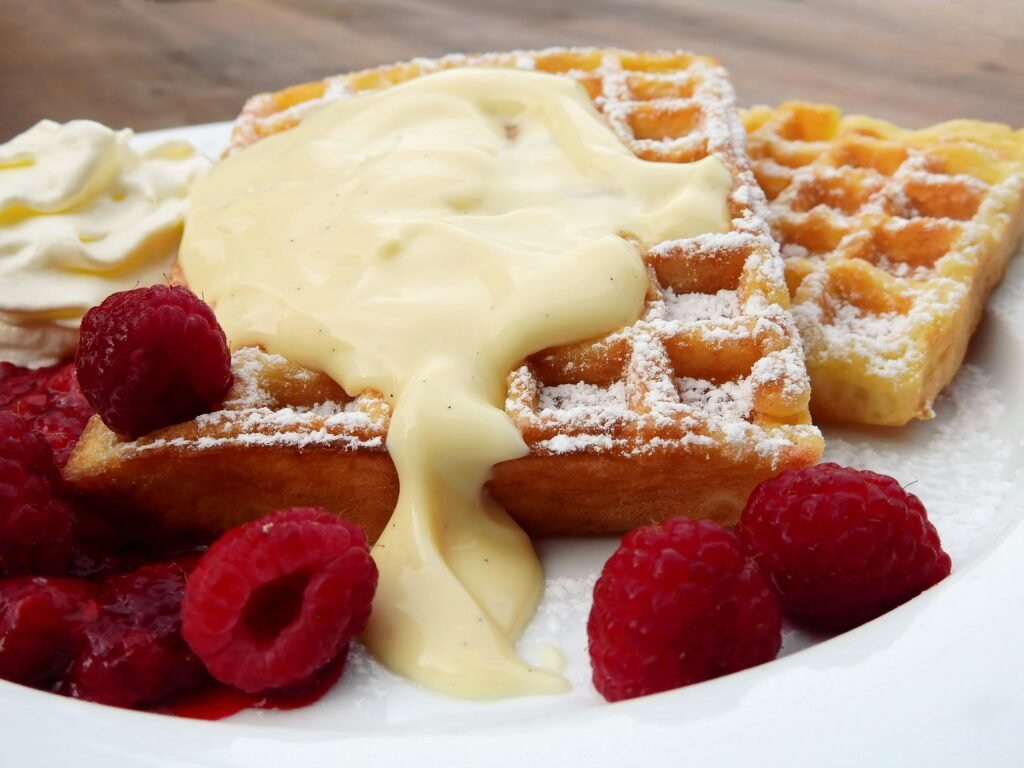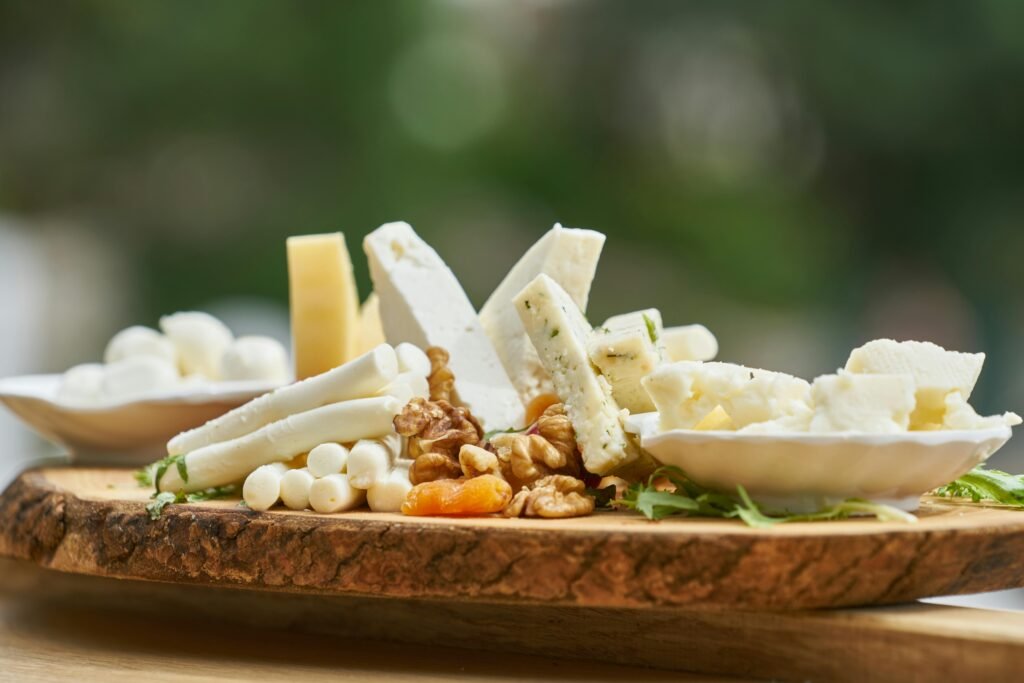Introduction to the Benelux Culinary Scene
The Benelux region, comprising Belgium, the Netherlands, and Luxembourg, boasts a rich and diverse culinary landscape that reflects its intricate history and cultural tapestry. This area is renowned not only for its vibrant cities and picturesque countryside but also for its distinct gastronomic offerings, which are deeply rooted in local ingredients and traditional recipes. Each country within the Benelux has cultivated a unique culinary identity, influenced by historical trade routes, agricultural practices, and neighboring countries.

Belgium, famous for its rich chocolates, delectable waffles, and world-class beers, presents a flavorful experience for any food enthusiast. The country’s culinary traditions showcase an impressive blend of regional specialties, where dishes like moules-frites (mussels and fries) and stoofvlees (beef stew) exemplify the use of fresh local produce. Belgium’s Renaissance of culinary arts has garnered international acclaim, making it a prominent destination for gourmet enthusiasts.
In the Netherlands, the culinary scene leans towards hearty, rustic flavors. Renowned for its traditional dishes such as stroopwafels and herring, Dutch cuisine emphasizes simplicity and quality. Moreover, the increasing popularity of plant-based diets has inspired innovative chefs to create modern interpretations of classic dishes, firmly placing the Netherlands on the culinary map. Local markets brimming with fresh ingredients serve as a testament to the nation’s commitment to sustainability and culinary authenticity.
Luxembourg, though smaller in size, is equally vibrant with its culinary arts. This nation showcases a mix of French and German culinary influences, resulting in a unique fusion. The emphasis on seasonal and locally sourced ingredients defines Luxembourgish cuisine, where dishes like judd mat gaardebounen (smoked pork with broad beans) highlight traditional flavors while honoring contemporary cooking techniques.
As we delve deeper into the gastronomic treasures of the Benelux countries, it becomes evident that this region possesses a rich culinary heritage worth exploring. The harmonious blend of tradition and innovation continues to elevate the dining experiences available in this culturally rich corner of Europe.
The Art of Belgian Waffles
Belgian waffles stand as a quintessential representation of Belgium’s culinary heritage, cherished for both their texture and flavor. They primarily fall into two categories: Brussels and Liège waffles, each showcasing unique characteristics. The Brussels waffle is light and airy with deep pockets, perfect for holding toppings, while the Liège variant is denser, featuring a chewy interior and caramelized sugar on the outside, giving it a delightful sweetness.

The preparation of Belgian waffles begins with a batter that combines flour, eggs, sugar, and yeast, creating a rich and flavorful foundation. The yeast allows the batter to rise, resulting in the characteristic lightness of the Brussels waffle. In contrast, Liège waffles utilize a dough enriched with pearl sugar, which caramelizes during cooking, producing a delightful crunch that enhances the overall taste experience. The typical cooking method employs a waffle iron, which creates the iconic grid pattern.
Culturally, Belgian waffles are much more than just a dessert; they symbolize moments of celebration and leisure. Whether enjoyed at a festival or savored at a café, these waffles are often accompanied by a variety of toppings such as whipped cream, fresh fruits, or chocolate sauce. Authentic Belgian waffles can be found in many settings, from street vendors dishing out warm waffles to upscale restaurants offering gourmet interpretations. When seeking an authentic experience, look for stands and eateries where you can watch the waffles being made fresh, ensuring you taste the genuine product.
A visit to Belgium isn’t complete without indulging in these sumptuous delicacies. With their rich flavors and cultural significance, Belgian waffles serve as a delicious introduction to the country’s vibrant food culture. Mixing tradition with modern gastronomy, they invite both locals and travelers alike to partake in their rich legacy.
Exploring Dutch Cheese Varieties
When one thinks of the Netherlands, the remarkable variety of Dutch cheeses is often at the forefront of culinary conversation. The country is celebrated for its rich history and expertise in cheese production, which began as early as the Middle Ages. Among the multitude of Dutch cheeses, three stand out as particularly iconic: Gouda, Edam, and Leyden. Each of these varieties has unique characteristics that reflect the region in which they are made, making the exploration of Dutch cheese both a flavorful and a cultural experience.

Gouda, perhaps the most famous of Dutch cheeses, is known for its creamy texture and sweet, nutty flavor. The cheese-making process involves a careful balance of curd and whey, followed by aging that can range from a few weeks to several years. As Gouda matures, its flavor deepens and complexity increases, allowing for a wide variety of taste experiences. Those seeking a fully immersive experience should consider visiting a local cheese shop or a traditional cheese market, such as the famous Alkmaar Cheese Market, where artisan producers demonstrate their craft.
Edam cheese, characterized by its mild flavor and semi-hard texture, is another beloved variety that originated in the Edam region. This cheese is typically recognized by its distinctive spherical shape and the red wax coating that preserves its freshness. The cheese-making process for Edam involves the use of cow’s milk and is similar to that of Gouda but with differences in heating and curd handling. Its light flavor pairs wonderfully with fruits, olives, and crispbread, making it a versatile addition to any cheese platter.
Lastly, Leyden cheese embodies the savory influence of cumin, giving it a distinctive taste that sets it apart. Often enjoyed on its own or in gourmet sandwiches, Leyden is a favorite among cheese enthusiasts who appreciate its bold flavor profile. The presence of traditional cheese festivals throughout the Netherlands, notably in towns like Gouda and Edam, provides an excellent opportunity for visitors to engage with local cheese makers, sample various types, and learn about age-old recipes and techniques.
Luxembourgish Wines: A Hidden Gem
Luxembourg, often overlooked in discussions about European wines, boasts a remarkable and diverse wine landscape, particularly within the scenic Moselle Valley. This region, characterized by its steep riverbanks and fertile vineyards, is home to some of the finest wines in the Benelux countries. The Moselle Valley benefits from a mild climate that fosters the growth of unique grape varieties, primarily Riesling, Pinot Gris, and Gewürztraminer, each contributing to the country’s distinct wine offerings.

The characteristics of Luxembourgish wines are influenced significantly by the local terroir. The soil composition, which includes a mix of limestone, clay, and gravel, allows for an intriguing range of flavors in the wines produced. The Riesling, for instance, is renowned for its crisp acidity and floral notes, often accompanied by mineral undertones that reflect the limestone-rich soils. Pinot Gris and Gewürztraminer add complexity with their aromatic profiles, showcasing hints of peach, honey, and spice, making them ideal companions for various dishes.
For wine enthusiasts, the Moselle Valley is a treasure trove of experiences. Wineries such as Domaine Vignoble Mousel and Caves St. Martin are exceptional destinations that offer guided tours and tastings, allowing visitors to appreciate the nuances of Luxembourgish wines. These wineries emphasize sustainable practices, ensuring that each bottle encapsulates the essence of the region. Additionally, many vineyards provide picturesque settings for outdoor tastings, where guests can enjoy a glass while overlooking the lush landscape.
As the interest in Luxembourgish wines continues to grow, they represent an exciting opportunity for wine lovers to explore a lesser-known yet remarkable part of the European wine scene. The combination of unique grape varieties, favorable local conditions, and dedicated wineries ensures that Luxembourg remains a hidden gem for those seeking extraordinary wine experiences.
The Permaculture of Taste: Local Ingredients
The culinary traditions of the Benelux countries—Belgium, the Netherlands, and Luxembourg—are enriched by a profound commitment to local and seasonal ingredients. This dedication not only celebrates the unique flavors of each region but also supports sustainable agricultural practices. Farmers’ markets, which have become integral to the local food scene, allow consumers to engage directly with producers. Here, food enthusiasts can deeply appreciate the significance of freshness and quality that characterize local ingredients.
In Belgium, renowned for its artisanal chocolate, local chocolatiers often source their cacao beans and additional ingredients from nearby areas, emphasizing a farm-to-table approach. Luxembourg showcases a variety of locally-grown vegetables, such as endives and carrots, which feature prominently in traditional dishes. The agricultural diversity extends to local fish, particularly the perch and pike that are commonly found in the region’s rivers, enhancing the sustainability of its fishery practices.
The Netherlands is no stranger to this philosophy, with its heritage of using local ingredients shaping iconic dishes. The Dutch take pride in their robust dairy products, especially cheeses like Edam and Gouda, which are crafted from milk sourced from local farms. From foraging wild herbs to embracing home-grown produce, chefs in the Netherlands skillfully incorporate these elements, making their culinary creations a celebration of the land.
These practices are crucial not only for preserving the region’s distinctive flavors but also for promoting environmental sustainability. As diners become increasingly aware of the ecological consequences of their food choices, the focus on local and seasonal ingredients is expected to gain further traction. Thus, understanding the permaculture of taste in the Benelux countries provides a holistic view of gastronomy that extends beyond mere consumption, fostering a deeper connection between people, their food, and the surrounding environment.
Dining Etiquette in the Benelux
Navigating dining etiquette in the Benelux region, which includes Belgium, the Netherlands, and Luxembourg, is essential for anyone who wishes to fully appreciate the local culinary scene. Each country has its unique customs, but there are common practices that food lovers should familiarize themselves with to enhance their dining experiences.
One essential aspect of dining etiquette in the Benelux is the importance of punctuality. Arriving on time for dinner is not only polite but also expected, particularly in the Netherlands and Luxembourg. In contrast, Belgians may exhibit a more relaxed approach to timing, but it is still advisable to be on time, particularly for formal gatherings. When you are seated at a table, it is customary to wait for the host to begin the meal or to raise their glass during a toast before you start eating. This gesture demonstrates respect and acknowledges the host’s effort in arranging the gathering.
Table manners play a significant role in dining across the Benelux. One should keep their hands on the table (but not their elbows) and maintain a polite demeanor. In Belgium, it is common to use both a knife and fork throughout the meal, whereas in the Netherlands, casual dining may allow for more relaxed approaches, such as using one’s hands for certain dishes. As for communication, learning a few basic phrases in Dutch, French, or Luxembourgish can be beneficial and appreciated by locals. Simple expressions like “Dank u wel” (thank you in Dutch) or “Merci” (thank you in French) can create a welcoming atmosphere.
Understanding these dining customs will not only display your respect for local traditions but also elevate your gastronomic experience across the Benelux. Engaging authentically with the culinary heritage of each country can lead to delightful interactions and a deeper appreciation of the myriad flavors presented at their dining tables.
Festivals and Events Celebrating Culinary Arts
The Benelux countries, comprising Belgium, the Netherlands, and Luxembourg, are rich in culinary traditions that are celebrated through various festivals and events throughout the year. These gatherings not only highlight local specialties but also foster a sense of community and appreciation for the regional food culture. Food enthusiasts can immerse themselves in a diverse array of culinary experiences at these annual fairs, which are designed to showcase the unique flavors and products of each country.
One of the most notable events is the Annual Gastronomic Festival held in Ghent, Belgium, renowned for its celebration of local produce and traditional Belgian dishes such as mussels and fries. The festival features tastings, workshops, and exhibitions, offering participants a chance to engage with local chefs and food artisans. Similar experiences can be found at the Dutch Cheese Market in Alkmaar, where visitors can witness the traditional cheese weighing and selling process while sampling an extensive selection of Dutch cheeses. These markets not only emphasize the importance of cheese in Dutch culinary heritage but also provide an opportunity to purchase artisanal products directly from local producers.
Wine enthusiasts should not miss the Luxembourg Wine Festival, which occurs annually in September. This event showcases the finest wines produced in the Moselle region, along with delicious regional fare. Attendees can participate in guided tastings, vineyard tours, and meet the winemakers behind the exquisite labels. Additionally, the Netherlands hosts various gourmet events, such as the Amsterdam Food Festival, where attendees can indulge in a curated selection of dishes prepared by top chefs while attending cooking demonstrations.
To make the most of your culinary adventures, it is advisable to plan your visit around these engaging events. Researching specific dates and ticketing options in advance can enhance your experience, ensuring that you engage fully with the vibrant culinary scene of the Benelux countries.
A Culinary Itinerary for the Adventurous Food Lover
The Benelux countries—Belgium, the Netherlands, and Luxembourg—offer an impressive range of culinary delights, making them an ideal destination for food enthusiasts. For an unforgettable gastronomic journey, one can explore a carefully curated itinerary that highlights the unique specialties of each region.
Start in Belgium, renowned for its exquisite chocolates and mouthwatering waffles. A weekend getaway can begin in Brussels, where the acclaimed restaurant “Chez Léon” serves traditional moules-frites, or mussels and fries, a beloved local dish. Don’t miss the chance to visit the Marolles district, famous for its vibrant flea market and artisanal shops selling exquisite pralines. For a complete experience, devote time to the historic city of Bruges, where a canal-side dining experience at “De Halve Maan Brewery” combines local beer tastings with authentic Flemish stew.
Next, venture into the Netherlands, where a week-long exploration can begin in Amsterdam. Here, the “Foodhallen” is a must-visit, showcasing a diverse array of local street food vendors offering everything from stroopwafels to herring. A bike ride through the countryside can lead to the charming town of Haarlem, home to several Michelin-starred establishments like “De Leest,” where innovative Dutch cuisine awaits. Sampling a bitterballen, a traditional Dutch snack, is essential during your culinary journey, best enjoyed alongside a glass of local beer.
Finally, Luxembourg should not be overlooked, especially the capital city, which offers a blend of international influences. The “Bistro de L’Ill” is a standout, featuring contemporary dishes that highlight local ingredients. Exploring the farmers’ market in Place de Paris provides insight into the regional produce and artisanal products. Food lovers may also admire the classic glazed pork dish, known as “Judd mat Gaardebounen,” a perfect way to conclude this culinary itinerary.
Conclusion: Savoring the Flavors of Benelux
The culinary journey across the Benelux countries—Belgium, the Netherlands, and Luxembourg—offers a profound appreciation of the rich, diverse food culture that each nation possesses. From the iconic Belgian chocolates and waffles to the hearty Dutch cheeses and Luxembourgish pastries, every dish tells a story steeped in tradition and history. Each country showcases its own unique flavors, utilizing locally sourced ingredients that contribute to distinctive culinary signatures.
As you navigate through the various specialties, be it the intriguing combination of sweet and savory dishes or the delightful beverages that accompany them, it becomes clear that exploring Benelux cuisine is not just about tasting food. It’s about immersing oneself in the vibrant traditions and cultural identities that shape each culinary experience. For instance, a simple meal of mussels or frites in Belgium reflects the country’s maritime history, while Dutch stroopwafels evoke the warmth of community and family gatherings.
Encouraging readers to embrace this rich gastronomic landscape, we highlight the importance of savoring each bite and understanding the narrative behind every dish. As you embark on your own adventures through the Benelux, whether it’s visiting local markets, dining in quaint restaurants, or participating in cooking classes, remember that the flavors you encounter are a celebration of the region’s heritage. The act of tasting becomes a delightful expedition into the heart of what makes these countries special.
In pursuit of gastronomic satisfaction, we inspire fellow food lovers to explore the varied landscapes of flavors that Benelux has to offer. By appreciating the myriad influences on these cuisines, one can truly savor not just the food but the stories and traditions that enrich each meal throughout the Benelux countries.





